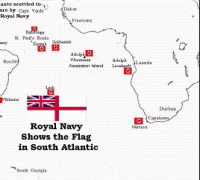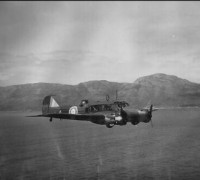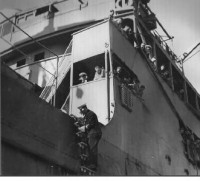THE AXIS AND ALLIED MARITIME OPERATIONS AROUND SOUTHERN AFRICA 1939 1945 - WAR ON SOUTHERN AFRICA SEA
9)RESEARCH AIM AND CHAPTER STRUCTURE
3. Research Aim and Chapter Structure
This study provides a critical, comprehensive analysis of the Axis and Allied maritime operations around Southern Africa between 1939 and 1945. The dissertation investigates this broad topic in terms of the research objectives outlined below and straddles the strata of war by offering fresh insights into an episode of South African military history which has heretofore received little scholarly attention. The dissertation furthermore distances itself from the majority of previous academic and popular works on the subject discussed supra. It offers a fresh, in-depth discussion based on extensive archival research supplemented by a wealth of secondary sources.
To achieve its primary aim, the study has the following secondary objectives. The narrative, constructed over five chapters, focusses on specific aspects of the maritime war waged off the South African coast during the war. The first chapter discusses the Axis and Allied maritime strategies off the South African coast. The general aspects of naval warfare theory and the foundation of a maritime strategy thus receives specific attention. The British and German naval war plans, however, are evaluated to determine their influence on the rival naval strategies and naval operations in the Southern Oceans. The chapter then focusses on South African wartime shipping dilemmas, especially how they influenced the South African war effort. The final discussion of chapter one is on the strategic importance of South African harbours during the war, paying particular attention to the control, victualling and repair of merchant and naval vessels that visited the Union ports between 1939 and 1945.
The second chapter concentrates on the development of the South African coastal defence system between 1933 and 1945. The chapter first investigates the establishment of South Africa’s coastal and naval defences during the interwar period, especially against the backdrop of economic rationalisation and Imperial defence. The chapter then discusses the creation of the Seaward Defence Force (SDF), while drawing attention to the somewhat tense Anglo-South African naval relations at the outbreak of the war. The chapter concludes with a lengthy discussion focusing on the development of a comprehensive South African coastal defence system during the war years.
The third chapter deals exclusively with the maritime operations of the Axis raiders, mines and submarines off the South African coast during the war. The chapter first investigates the operational successes of the Axis raiders and mines between 1939 and 1942. It then discusses the limited Japanese submarine operations in the Mozambican Channel during 1942 against the background of the strategic GermanJapanese Naval cooperation in the western Indian Ocean during the war. A detailed evaluation, from a strategic and operational point of view, of the Axis submarine operations in South African waters concludes the chapter. The sustained U-boat operations from 1942 to 1943 are subsequently deliberated on.
The fourth chapter discusses the maritime intelligence war waged in southern Africa during the Second World War. The section commences with an investigation of the instances of sabotage and subversion within the naval sphere in South Africa during the war. It also addresses the initial operational contacts established between the Ossewabrandwag and Germany during the first years of the war. The chapter next focusses on the role, functioning and effectiveness of the FELIX Organisation in southern Africa during the war, with a slant towards its contribution to the gathering and distribution of maritime intelligence to Germany. The culmination of this section investigates the purpose, organisation and success of the Cape Naval Intelligence Centre in southern Africa, with a specific emphasis placed on the operations of each of its core sections – tracking, operational intelligence, security and naval press relations and censorship.
The dissertation concludes with a fifth chapter, which focusses on the antisubmarine war off southern Africa between 1942 and 1944. Specific attention is paid to the evolution of ASW in South African waters. A comparison is drawn between the ASW measures put in place before the commencement of the main U-boat offensive in October 1942, and those in force during 1944 when the U-boat offensives ceased altogether. The chapter draws to a close with an evaluation of the effectiveness of the ASW off the South African coast by discussing the sinking of three German submarines between 1942 and 1944. These sinkings reflect positively on the improvements made with regards to ASW in these waters throughout the period concerned.



